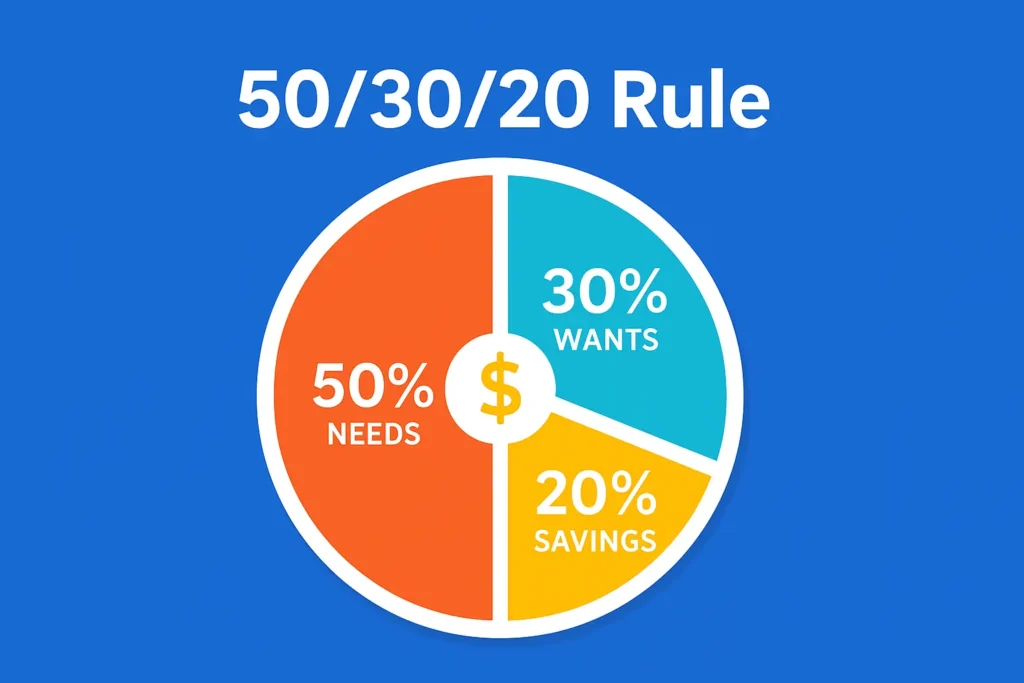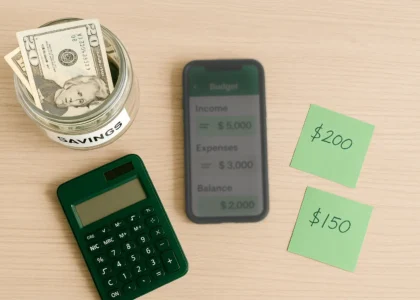Introduction
Ever feel like your paycheck disappears faster than you can say “shopping spree”? You’re not alone. With rent, groceries, and those fun little treats, it’s super easy to lose track where all your cash is going. Enter the 50/30/20 rule—a straightforward guideline that helps you take control of your finances without living like a monk. In just three simple buckets, you can cover essentials, treat yourself, and build a safety net for the future. Let’s walk through how this magic ratio can make your money work for you.
What Is the 50/30/20 Rule?
Imagine slicing your income into three portions:
- Needs (50%): The must-haves you can’t live without.
- Wants (30%): The nice-to-haves that keep life interesting.
- Savings & Debt Repayment (20%): The future-focused fund that grows your security.
By following this split, you get a clear roadmap. No complex spreadsheets or daily tracking—just a simple formula to follow every month.
Breaking Down Each Slice
Needs (50%)
Your “Needs” slice is all about survival and stability. Picture the roof over your head, your morning coffee that gets you going, and your daily commute. If these essentials are chewing up more than half your income, it might be time to reassess big-ticket items—like negotiating rent or finding ways to cut utility bills.
- Examples include rent/mortgage, groceries, utilities, insurance, and essential transport.
Wants (30%)
Here’s where you get to have fun without guilt. Whether it’s a weekend brunch, that new streaming service, or saving up for a short getaway, this portion ensures you enjoy today while still sticking to your plan. The key is moderation—treats are encouraged, splurges are optional.
- Think dining out, entertainment, hobbies, travel, and non-essential shopping.
Savings & Debt Repayment (20%)
This slice is your ticket to financial peace of mind. By steadily growing your emergency fund, investing for the future, or chipping away at debt, you create a cushion that can handle life’s curveballs. Over time, you’ll thank yourself for prioritizing this small but powerful portion.
- Build an emergency fund, invest in retirement or mutual funds, and pay down credit cards or loans.

Real-World Example
Let’s say your monthly take-home pay is ₹50,000. Here’s how it breaks down:
• ₹25,000 for Needs (rent, utilities, groceries) • ₹15,000 for Wants (coffee dates, Netflix, weekend outings) • ₹10,000 for Savings/Debt (emergency fund, mutual funds, credit card payoff)
Seeing the numbers side by side makes budgeting feel less like a chore and more like a game plan.
Why the 50/30/20 Rule Works
Most budgeting methods leave you overwhelmed with categories—groceries, gas, gifts, gadgets, and more. The 50/30/20 rule cuts through the noise by focusing on just three goals:
- Simplicity: No need to log every expense. Follow the ratio and adjust quarterly.
- Balance: You get to live comfortably today while saving for tomorrow.
- Flexibility: As your income or goals change, tweak the percentages.
Seeing progress in all three areas keeps you motivated and reduces financial stress. And if you’re looking to increase your cash flow before you even start budgeting, check out our guide on 25 Profitable Small Business Ideas You Can Start Today.
When to Tweak the Ratio
Life isn’t one-size-fits-all. If you’re drowning in debt, you might flip the script to 50/20/30, sending more toward repayment. Or, if you’re saving for a big goal—say, a down payment—you could go 40/30/30 for a few months. The rule is a guide, not a jail cell.
Visualizing Your Budget
A quick pie chart can turn abstract percentages into a clear picture. Draw or generate a circle split into three colored wedges—half for Needs, nearly one-third for Wants, and the final slice for Savings. This simple graphic serves as a daily reminder and makes tracking more engaging.
Bonus Tips for a Strong Budget
- Automate your savings: Out of sight, out of mind—set automatic transfers on payday.
- Use a budgeting app: Mint, YNAB, or even a simple spreadsheet can help you check in at a glance.
- Review quarterly: Life changes—raises, rent hikes, new hobbies. Tweak your ratios every few months.
- Celebrate milestones: Hit six months of consistent saving? Treat yourself—but keep it within the Wants budget!
Conclusion
Budgeting doesn’t have to be a gruelling exercise in willpower. With the 50/30/20 rule, you get a flexible framework that supports both your present joys and future dreams. Start today—break your next paycheck into three parts, and watch how small changes can add up to big results. For more smart money moves, keep exploring Biz and Bucks: your go-to spot for simple, effective finance tips.
For more simple money tips and motivation, follow us on Instagram — we share easy finance hacks and smart saving ideas daily!






